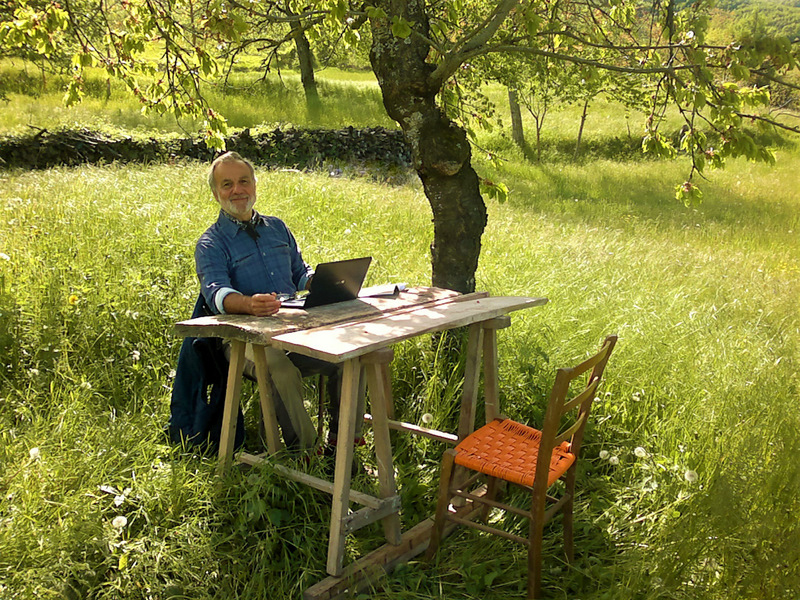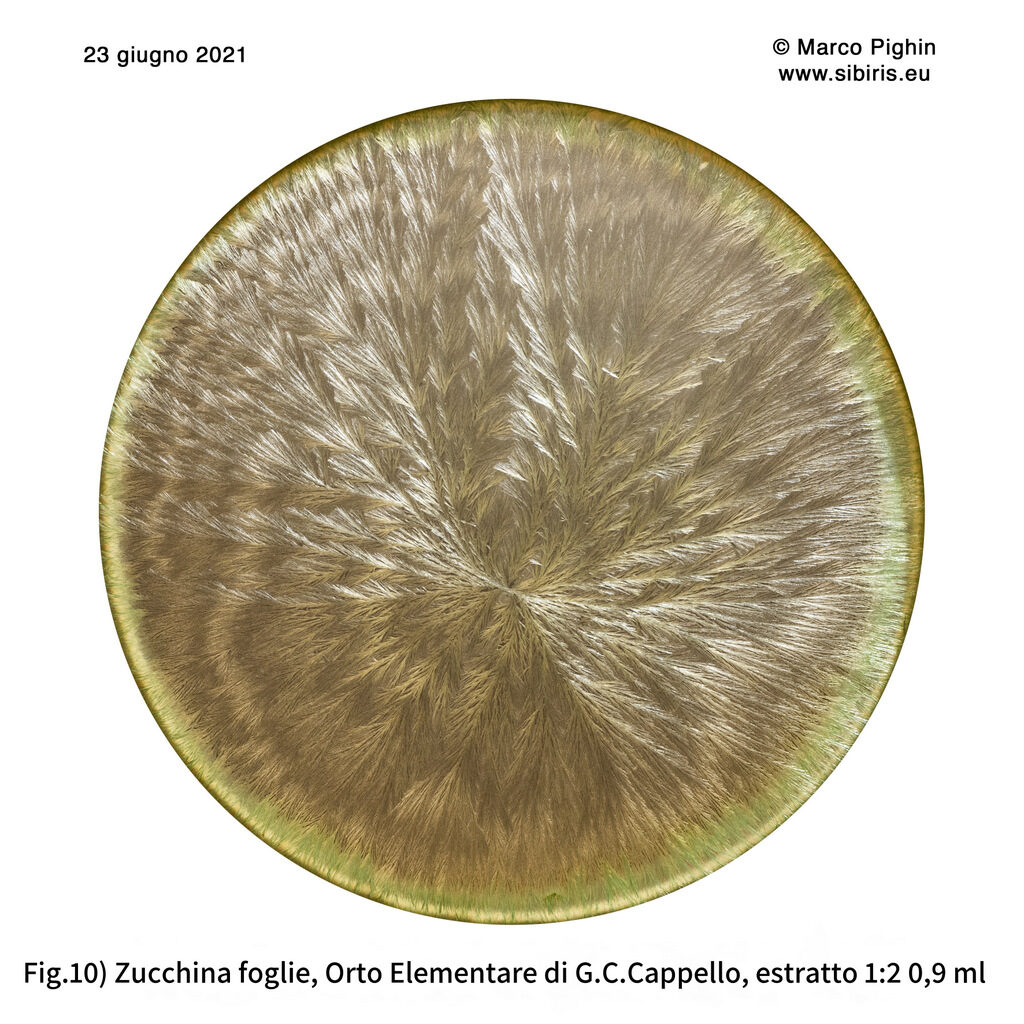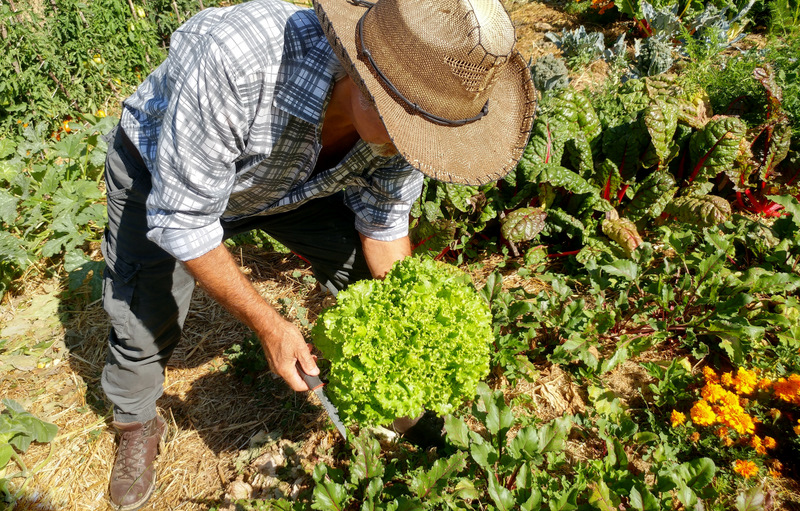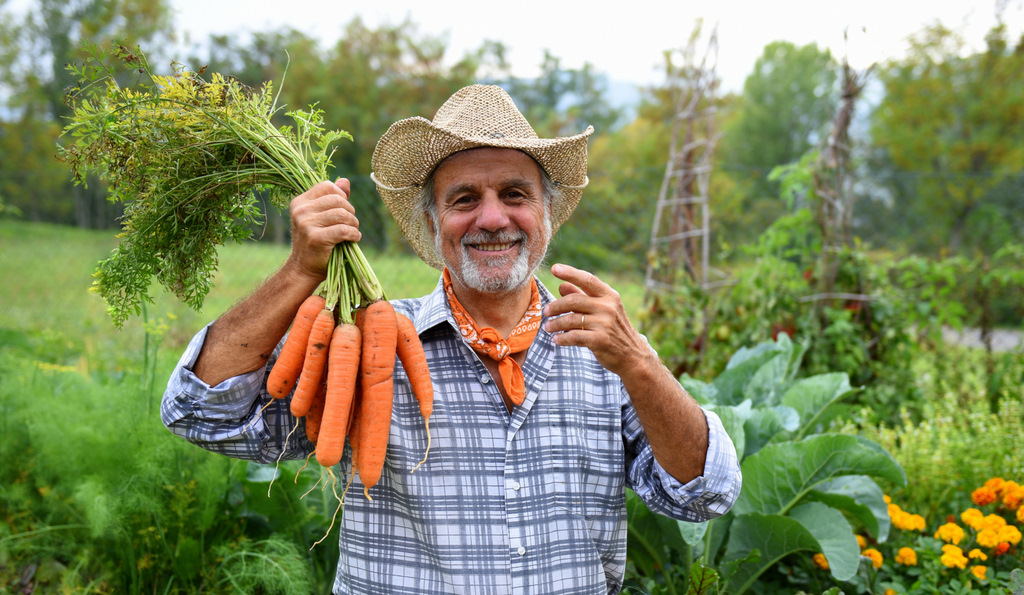In the collective imagination, clay soil is considered a challenging enemy of cultivation and is therefore despised by many. I am about to discuss it in order to defend the Great Misunderstood.
"Heavy," "muddy," "impossible!" "plasticine," "concrete," "full of cracks," "bad," "asphyxiating," "difficult," "impermeable," "impenetrable." These are just a few of the unflattering epithets attributed to it.
In this article, I intend to clarify the misconception behind its bad reputation and demonstrate not only that clay soil is cultivable but that, compared to other types of soil, it has even greater fertility potential.
The discussion of this specific topic relates to the broader context of questioning the credibility of the dictates of "official" science that define Western culture. The branding of scientific-knowledge-based concepts that we have been subjected to since our first contact with education can generate the conviction in each of us that there are indisputable "scientific" foundations on which to base any subsequent reflection. Yet, a glance at the past is enough to see how "institutional" science is chasing, without resolving, the mistakes made by previous generations in every field of application. We could define this type of science as a process of materialistic degeneration of intuition and perception, powers granted by Nature to every living being to maintain their consonance with reality. Contrary to what we are taught, materialistic science does not explain Nature; instead, it alienates us from it..
Agricultural sciences do not exempt themselves from this involution and assert a hyper-materialistic view in which agricultural land, unlike natural land, is a mineral uninhabited place: Mars on Earth. At agricultural school, I was taught to only consider the mechanical-chemical-physical aspects of the soil and not the vital energy of its rightful inhabitants.
Based on my repeated experience, in Elementary Farming vegetation finds the sustenance it needs for a healthy life only if the soil consists of the combination of the material and energy components; Outside of this condition, to make a plant grow from seed to fruit, we are obliged to intervene with artificial means, that is, with agricultural practices that kill the living part of the soil, reducing it to an inert substrate, in an endless cycle of avoidable causes, inadequate remedies, and disastrous effects.

First of all, we must distinguish between "clay" and "soil with a predominantly clay component“.
When clay is in its pure state, it becomes the object of excavation, as is the case, for example, in the famous quarries of Impruneta (close to Florence). This pure clay has been used for millennia in the production of pottery, tiles, bricks, and other countless artifacts.
The term "clayeyreferred to cultivable soil does not indicate pure clay but rather the prevalence of clay (not below 18%) compared to other components such as sand, silt, and organic matter.
The second necessary distinction is between clay soil in its natural complexity and how it is reduced after cultivation practices. When agriculture presents clay as an example of soil that is difficult for cultivation, cracking when dry and turning into mud when wet, it is actually referring to the conditions to which agriculture has reduced it through cultivation and irrigation. Season after season, the many centuries of cultivation have compromised the true nature of clay soil, leading to the current serious misunderstanding of its real qualities.
Soil with a predominantly clay component, unlike other types of soil, is characterized by a cohesive structure that allows for the perfect union between the mineral and organic components. To explore this further and comprehend why it is best not to disturb clay soil for optimal results, we need to introduce the concept of the "colloidal state".
Various types of soil are classified based on the size of the particles that compose them, and clay particles are the smallest of all, measuring less than 2 μm in diameter. Due to their extremely fine particle size, clay, more than other types of soil, presents its mineral components in a particular form of aggregation known as "colloidal". Since organic matter also aggregates in a colloidal state, this common condition potentially allows for the natural joining process between these two seemingly incompatible worlds: : the soft and mobile organic matter with the hard and inert mineral matter..
Both the mineral and organic colloids present in the soil have a negative electrical charge that repels them from each other. For them to unite instead of repelling, the soil needs to be naturally moist without human intervention. In moist soil, in equilibrium with other components, water molecules are present, and in H2O, the electrons of hydrogen, i.e., the negative charge of the molecule, are attracted to the oxygen nucleus in such a way that the two electropositive poles remain free to capture both mineral and organic colloids, allowing them to coexist despite their negative electrical charges.
The moisture provided by irrigation water, not being pure water like rainwater, prevents colloid cohesion and is the cause of their leaching. It indeed contains elements with numerous positive electrical valences capable of "capturing" and carrying mineral and organic colloids deep into the soil, annihilating the fertility of the cultivable soil's surface layer. For this reason, irrigation, which is essential in agriculture, is a practice deleteriouspractice. The reason why organo-mineral colloids are not carried deep into the soil by rainwater is that rainwater, being pure, has less attractive force than the minerals with positive electrical charges present in the soil, such as Ca, Fe, Mg, Al. These minerals, due to their strong electropositivity, can retain the electronegative organo-mineral colloids in the cultivable surface layers.
The particular and specific characteristic of soil with a predominantly clay component is, therefore, that it is made up of an articulated colloidal structure, which maintains its fertility as long as it is not worked and irrigated..
Cultivation practices and irrigation deconstruct its nature by breaking the colloidal bond and dispersing the organic and mineral components. This occurs because the low-energy cohesion of the colloidal particles that form the soil is extremely fragile. To destroy the work of Nature, a few cultivation practices, even those deceptively defined as "soft," are enough.
Elementary Farming, by fully respecting in toto the natural processes in the soil, enhances the potential of soils with a clayey component and maintains their structure unaltered. Clay soil, when allowed to remain in its natural state, does not have cracks or waterlogging issues and is very welcoming, contrasting with the exact opposite experienced by those who insist on working the soil. If we consider clay soil for what it is in Nature, i.e., a dynamic and living organism organism rather than a static model devoid of life, we can understand how it can adapt in real-time to external weather conditions, expanding its structure to drain rainwater and contracting in periods of drought to maintain moisture unchanged and stable.
If, after reaching a certain level of fertility through Elementary Farming, cultivation practices were to be resumed, clay soil would become as hard as bricks or reduced to mud.
After clarifying the reasons why clay soil can be considered the best for cultivation, we can add that for the same reasons it is also best suited to regain fertility in a short time, even if it has been tormented by years or centuries of destructive cultivation practices followed by neglect.
Agricultural practices quickly annihilate the life of the soil, but due to the reconstructive capacity of its colloidal mineral and organic matrix, clay soil, and any other type of soil, are always ready to recreate conditions of natural fertilityif given the opportunity.
At the beginning of Elementary Farming, clay soils depleted by previous destructive agricultural interventions (even if they have been abandoned for decades) quickly absorb the mulch, a sign of a lively reaction aimed at regaining organic matter and rediscovering fertility. Later on, this voracious hunger will slow down and normalize.
With the practices underlying Elementary Farming, even less clayey soils can undergo organicization processes and become fertile, although they require more time due to the lower percentage of fine clayey components, which are better suited for colloid formation. However, by adopting Elementary Farming, sandy soils, as well as other types of soil, can modify their structure and form organo-mineral colloids through the work of the new life that colonizes them, ultimately reaching an excellent state of fertility that is no less than that of clay soil.
Clay soil is commonly referred to as "heavy" and "compact": the adjective "heavy" relates to the difficulty of working with it, while "compact" is a characteristic related to its structural cohesion.
On the other hand, sandy soil is described as "light" and "loose": in this case, "light" refers to the ease with which it can be penetrated and turned over by agricultural tools, while "loose" refers to the structural incoherence of the predominantly sandy granules.
These terms are highly misleading because:
- The term "heavy" , when referring to the physical effort required to work clay soil, does not describe its intrinsic quality, but rather the state in which the soil appears after it has been worked and thus destructured.
- Thanks to it's greater porosity and the chemical and mineralogical nature inherent in its structure, clay soil has a lower density compared to sandy soils. In fact, the particles that compose clay soil, finer than powder, enable colloid formation and facilitate the passage of much more air, which, in the absence of cultivation, makes it "light".light“.
Paradoxically, clay soil can be described as both light and compact, while sandy soil is described as loose and heavy.
Clay soils are the most common in Italy, from the south to the north, in plains and mountainous areas. Promoting awareness and understanding of this different and inspiring reality encourages targeted cultivation forfood self-sufficiency, even in rural areas where the nature of the soil may seem challenging.
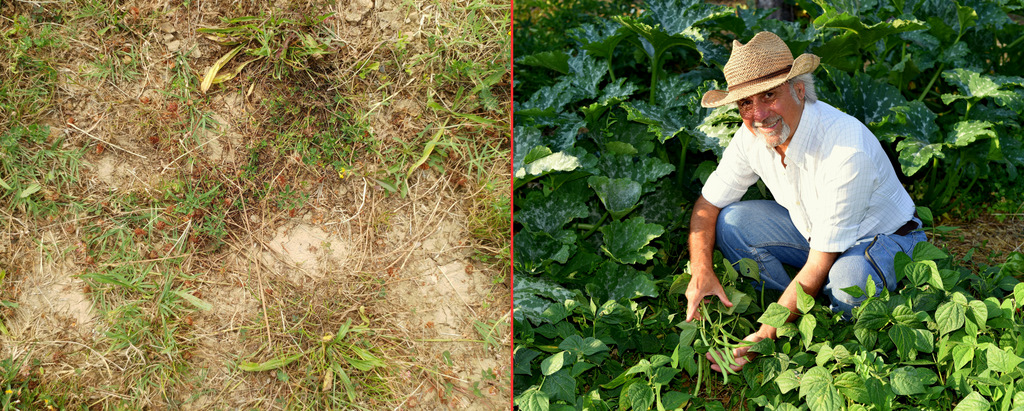
Text and photos by Gian Carlo Cappello and Mara Lilith Orlandi. © All rights reserved. Reproduction prohibited.

